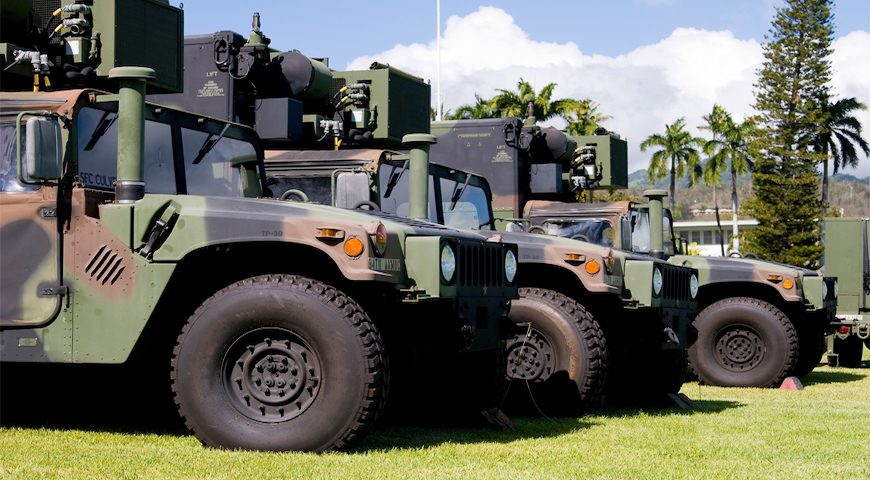The Army developed the first chemical agent resistant coatings in 1974. The Army made the decision in 1983 to require all combat, combat support, tactical wheeled vehicles, aircraft, and essential ground support equipment (i.e., tactical equipment) be painted with CARC. This decision initiated the development of the CARC protocol as it exists today. As a result of stringent health and environmental regulations, lead and hexavalent chromium were removed from CARC and the levels of solvents or volatile organic compounds (VOCs) were reduced. These actions occurred before the Gulf War.
CARC is essentially a low gloss version of automotive-grade polyurethane paint. These coatings provide the standard characteristics of any protective finish: corrosion resistance, durability, identification marking, etc. However, CARC formulations provide some unique properties that distinguish them from typical commercially-available paints.
Chemical agent resistant coatings all have a very matte finish, or extremely low gloss, to minimize visual detection due to glare or reflection from the sun or other bright light sources.
Because chemical warfare agents are unable to penetrate the coating, a standard military decontaminating solution, such as decontaminating solution number two (DS2), can readily neutralize surface chemical contaminants on CARC-painted vehicles. CARC’s resistance to a variety of chemicals and solvents, and its ability to withstand weathering—including exposure to sunlight—has made CARC the paint of choice for outdoor use in a military-operational environment.
While all colors of CARC are chemically similar, the pigmentation additives in CARC formulations have unique properties and characteristics that make them particularly suitable for military operations. For example, the base green color—referred to as Green 383—used in the common three-color woodland pattern employed throughout the military, uses two types of pigments with reflectance properties in the near-infrared region of the spectrum. The combination of these pigments mimics the reflectance properties of chlorophyll present in living foliage, such as tree leaves and grasses, and thus minimizes detection of woodland-scheme CARC-painted equipment by near-infrared detectors. Another color, Tan 686, was reformulated with higher reflectance pigmentation to reduce the amount of solar heat vehicles would absorb, which was a serious concern during Operation Desert Shield. A subsequent color change, designated Tan 686A, increased the reflectance properties of the coating. Initial supplies of CARC available in the early stages of Operation Desert Shield were Tan 686. As new batches of CARC were manufactured to meet the supply needs, Tan 686A became the standard. See Tab C for a discussion of CARC formulations.
Read more: What is CARC?






